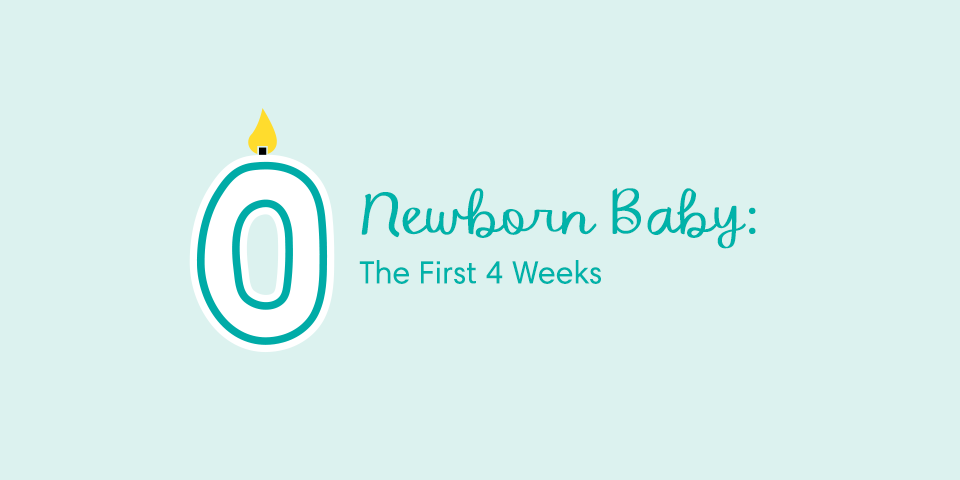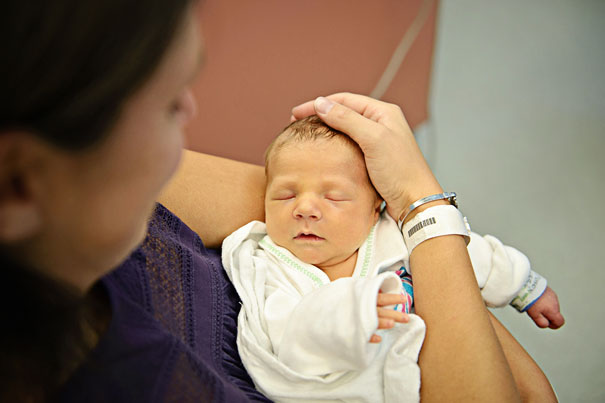
All About Preterm Birth and Your Preemie Baby
Experiencing an early birth and having a preterm baby can be incredibly overwhelming for parents. It’s important to keep in mind that each premature birth and situation is different. Your neonatal care team will provide personalized care and support for you and your new baby, as well as give you all the necessary information. In our article, we’ll cover the meaning of premature birth and preterm babies, including the potential causes and risk factors of preterm labor and birth, signs to watch for, and the medical requirements of a preemie.
What Is Premature Birth?
During pregnancy, it’s normal to have certain concerns. A common concern is often regarding premature labor and birth. So, what is considered preterm or premature birth? Premature birth, also known as preterm birth or preterm delivery, occurs when a baby is born too early. A full-term pregnancy lasts for about 40 weeks from the first day of your last menstrual period. So a birth that happens before 37 weeks is considered premature.
Today, about 1 in 10 infants in the United States are born at or before week 37 of pregnancy.
What Is Considered a Preemie?
What is a premature infant? Babies born prematurely can also be referred to as preterm, premature, or preemie babies. Definitions differ slightly among medical experts and organizations, but in general, when a baby is born at 37 weeks or earlier, they are considered premature, and the birth is called preterm.
The calculation is based on the date of the mother's last period and an evaluation of the physical and neurological maturity of the baby, using ultrasound measurements while he is still in the uterus and a direct examination after birth.
How Early Can a Baby Be Born?
Babies can be born as early as 22 to 24 weeks of pregnancy, which is considered the edge of viability. Advances in neonatal care have improved survival rates for these extremely preterm infants, though they often require intensive medical support due to underdeveloped organs.
Births before 28 weeks are extremely preterm and carry significant risks, but with proper care, many of these babies can survive and thrive.
Different Stages of Premature Birth
If you’re wondering how many weeks ‘premature’ is, keep in mind that not all preterm babies fall into the same category. That’s because the number of weeks the baby is premature affects their health and the type and amount of medical assistance required to ensure they develop, and are kept comfortable. NICU staff will be able to help you make decisions about the best treatment for your preemie and other measures to make your baby more comfortable.
Many experts group preemies into these broad categories: extremely premature, very premature, moderately preterm, and late preterm.
Extremely preterm. Babies born before 28 weeks of pregnancy are considered extremely premature.
Very preterm. If a baby is born before week 32 of pregnancy, they’re considered very premature.
Moderately preterm. This includes babies born between 32 and 34 weeks of pregnancy.
Late preterm. Late preterm is when a baby is born between weeks 34 and 36 weeks of pregnancy. Babies born moderate to late preterm can look pretty much like full-term babies, only smaller. They can still face health challenges, but their medical team will be able to give you advice on ways to reduce any risk of complications so that you can take your newborn home as soon as possible.
Signs of Early Labor and Birth
Recognizing the signs and symptoms of early labor and birth, also known as preterm labor and birth, is crucial for seeking timely medical intervention. Common signs include:
Regular or frequent contractions
Menstrual-like cramps
Low, dull backache
Pelvic pressure
Changes in vaginal discharge (watery, mucus-like, or bloody)
Sudden increase in vaginal discharge
Abdominal cramping with or without diarrhea
If you experience any of these symptoms, it's important to contact your healthcare provider immediately.
For more detailed information on the signs of preterm labor check out our comprehensive article.
What Causes Preterm Labor?
There are many causes of prematurity; some are known and some are not. Not all pregnant people who experience preterm labor or delivery have known risk factors. Some reasons and risk factors for premature birth may include:
Multiple births. Twins, triplets, and other multiples are not often carried to full term. Over half of twins have a chance of an early arrival, and the odds rise from there as the number of babies carried in the uterus increases. If you’re expecting multiples, your healthcare provider will discuss your chance of having a preterm birth and help you prepare for this possibility.
Infections. Vaginal bleeding or certain infections such as urinary tract infections, respiratory illnesses, and vaginal infections are known to be associated with preterm birth. The membranes surrounding the baby in the womb are a major barrier to infection. If these break or rupture early, the baby is at risk for infection. This is called premature rupture of membranes. If any sign of infection occurs in the mom or is suggested in the monitoring of the fetus, an early delivery will be needed. It could be that the premature rupture of membranes may be caused by infection.
A condition of the pregnant parent. Pregnant people with uterine or cervical abnormalities; chronic illnesses such as kidney disease, preeclampsia/eclampsia (a pregnancy-related illness with high blood pressure), or diabetes; or a poorly functioning, bleeding, or damaged placenta usually require early delivery of the baby. Delivery may be by cesarean-section (c-section) or a vaginal birth may be induced for the well-being of the pregnant person and/or the baby.
Other health factors of the pregnant person. The following lifestyle and medical factors have also been linked to a higher rate of preterm birth. These include:
A previous preterm delivery
Past fertility problems, or multiple abortions or miscarriages in previous pregnancies
Becoming pregnant less than 18 months after a previous birth
Having a low prepregnancy weight or being overweight before pregnancy
Being younger than 17 or older than 35
Smoking or substance use during pregnancy
Health Needs of Premature Babies
If your baby is born prematurely it’s natural to feel concerned about the health risks associated. Keep in mind, that every preterm baby is different, including the medical conditions that may or may not be present, and modern neonatal care is capable of more than ever before.
The longer your baby spends inside the uterus, the more time they have to develop and ready themselves for the outside world. This means that, generally, the less premature your baby is, the more development they will have already gone through.
These challenges often involve additional support for breathing, feeding, and maintaining body temperature. That’s why you often see preemies in incubators. Preemies might need help from:
Neonatal Intensive Care Unit (NICU) for monitoring and specialized care
Respiratory support, such as ventilators or oxygen therapy
Intravenous (IV) fluids and medications
Assistance with feeding, possibly through a feeding tube
Thermal regulation in an incubator to maintain body heat.
These measures ensure that preterm babies receive the necessary care to support their growth and development. It’s important to remember that every baby and situation is different, including any health conditions that may or may not be present after birth. Your healthcare team will support you and provide you with all the information you need, as well as give your little one the best care possible.
Can You Prevent Preterm Labor and Birth?
There is no guaranteed way to prevent preterm labor, but if you are at risk, such as having previously experienced a premature birth (with a single baby) and you’re pregnant again, or you have a short cervix, your healthcare provider might consider using a progesterone treatment during your pregnancy. Progesterone is a hormone that is present during menstrual cycles and pregnancy, playing an important role in supporting these processes. Progesterone may help lower the risk of preterm birth.
Some things you can do to help lower your risk of preterm birth include:
Attending your prenatal appointments. From the beginning of your pregnancy, you are advised to attend all appointments and let your healthcare provider know about any health conditions or possible risk factors you might have.
Adopting a healthy lifestyle. Smoking, alcohol, and substance use are associated with a higher risk of preterm labor, so it’s recommended to reduce your intake of these substances, especially during pregnancy.
Aiming for healthy pregnancy weight gain. Being overweight may also increase your risk of health issues that can be associated with premature birth, such as diabetes or pre-eclampsia. Keep in mind that experts only advise actively trying to lose weight before you become pregnant. Slimming during pregnancy is not recommended, but by sticking to a healthy, balanced diet and getting gentle exercise you can do a lot to help keep your pregnancy weight gain on track and reduce the risk of complications.
Reducing stress. Find ways to relax and unwind each day. This may be simply doing something you love, such as coffee with a friend, or trying relaxation methods like meditation and yoga. Even a short walk in the fresh air can help clear your mind.
The Bottom Line
Preterm birth, occurring before 37 weeks of gestation, brings unique challenges for both babies and their families. Preemies may need extra care, such as breathing support, help with feeding, and staying warm in a Neonatal Intensive Care Unit (NICU). Recognizing the signs of early birth and knowing what kind of care preterm babies might need can make a big difference in their health and development. With the right medical support and lots of love, many preterm babies can overcome these early challenges and grow up healthy and strong.
Don't forget to download the Pampers Rewards App! It can help you keep track of your baby’s development and provide useful insights to help guide you in your parenting journey.
- American College of Obstetricians and Gynecologists. Your Pregnancy and Childbirth: Month to Month, 6th ed. (Washington, DC: American College of Obstetricians and Gynecologists, 2015).
- Cleveland Clinic. “Preterm Birth.”
- Cleveland Clinic. “Progesterone.”
- Mayo Clinic. “Premature Birth.”
- Kids Health. “Treatments to Prevent Premature Birth.”
Read more about Baby
Related Articles
Join a World of Support
through Pregnancy and Parenthood.
TRACK WITH TOOLS
LEARN WITH EXPERTS
GET REWARDED














